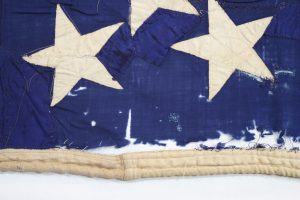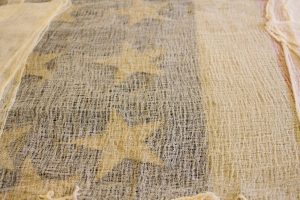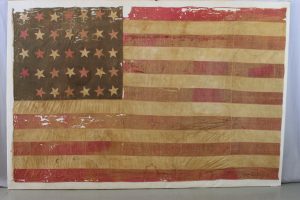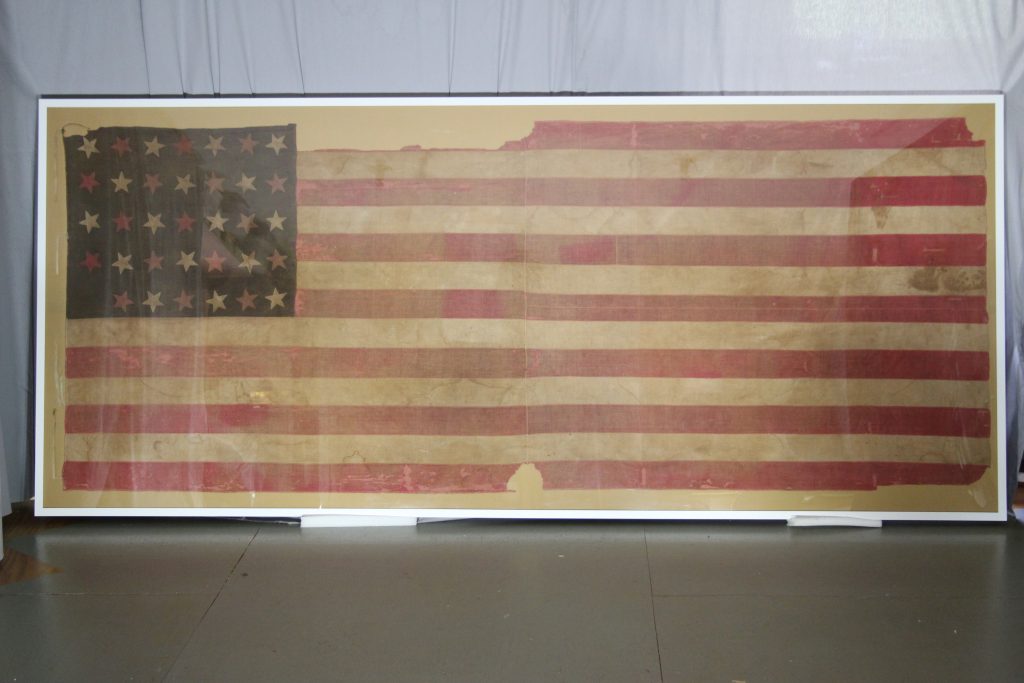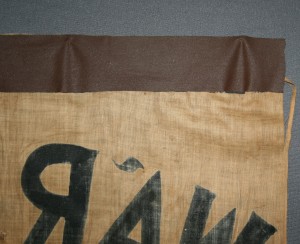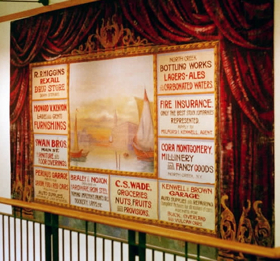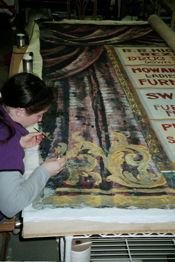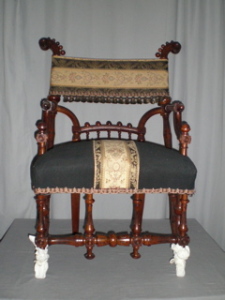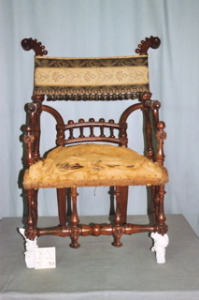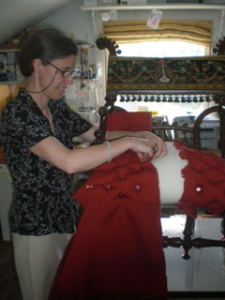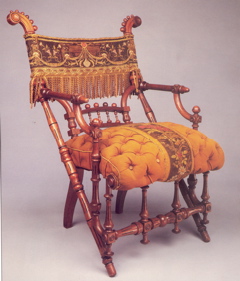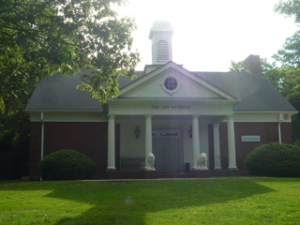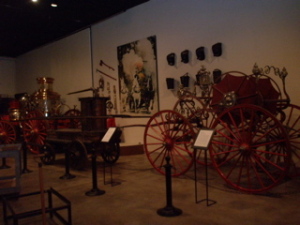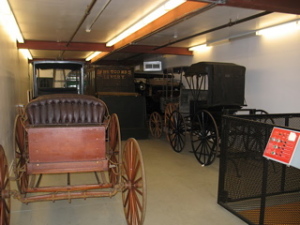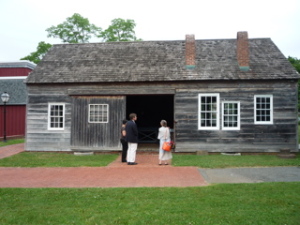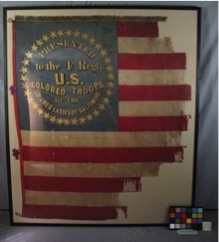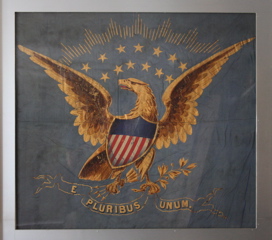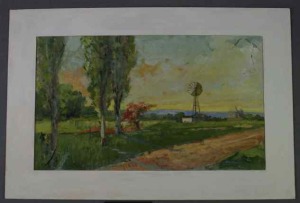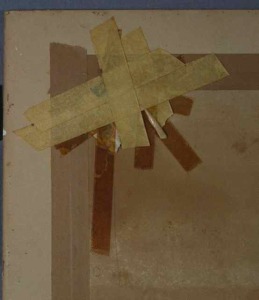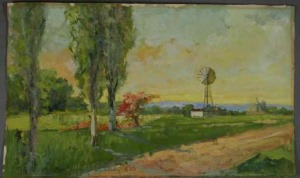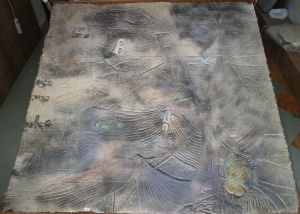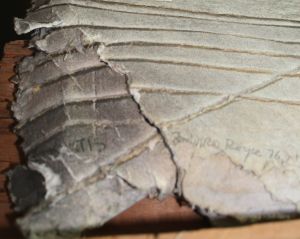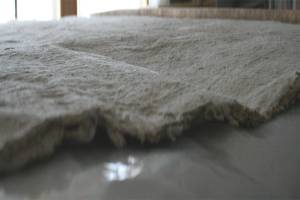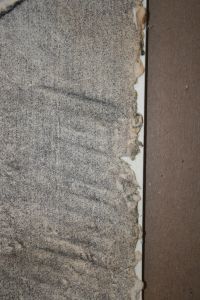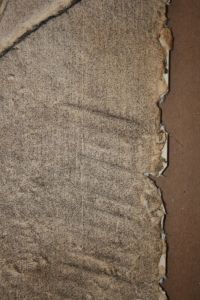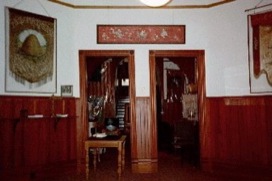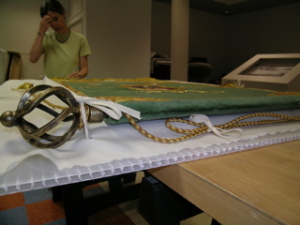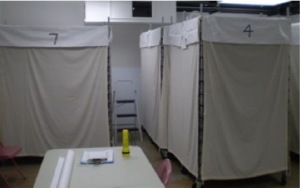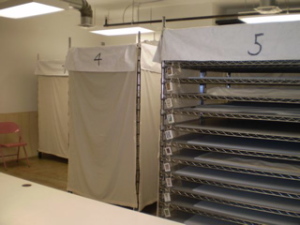Wilson’s Creek National Battlefield sits just outside of Republic, Missouri and is part of the National Park Service. A visit to this Civil War Battlefield is “a must” for any historian or Civil War enthusiast. It preserves the site of the Battle of Wilson’s Creek, also known as the Battle of Oak Hills. Fought on August 10, 1861, it was the first major American Civil War engagement west of the Mississippi River. The Confederate’s failure to exploit their victory here resulted in keeping Missouri in the Union.
Spicer Art Conservation, LLC was entrusted to care for three battle flags from the Wilson’s Creek site. Each flag required conservation treatment as well as an archival pressure mount for display.
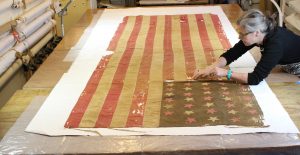
Each of the flags had specific needs and no two flags were alike. As any textile expert will tell you, the fabrics of a flag have much to do with the way the flag survives through history. Whether a flag is composed of silk, wool or cotton will have much to do with the possible damage it may suffer.
The first flag, called the “Lyon Flag” is a 34-star wool flag commissioned in 1861 after Kansas became the 34th state. The flag was quite stained overall and had small holes scattered throughout, as well as loss where the canton (aka the field) pulled away from the hoist (see image below). It also had numerous repairs to both the stripes and canton.
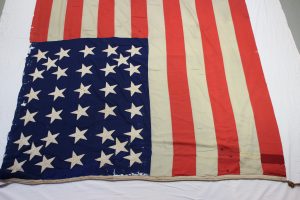
It was carefully cleaned. Below the dirt and debris is wicked away and captured in the cheesecloth material.
The flag was conserved and pressure mounted. See image below.
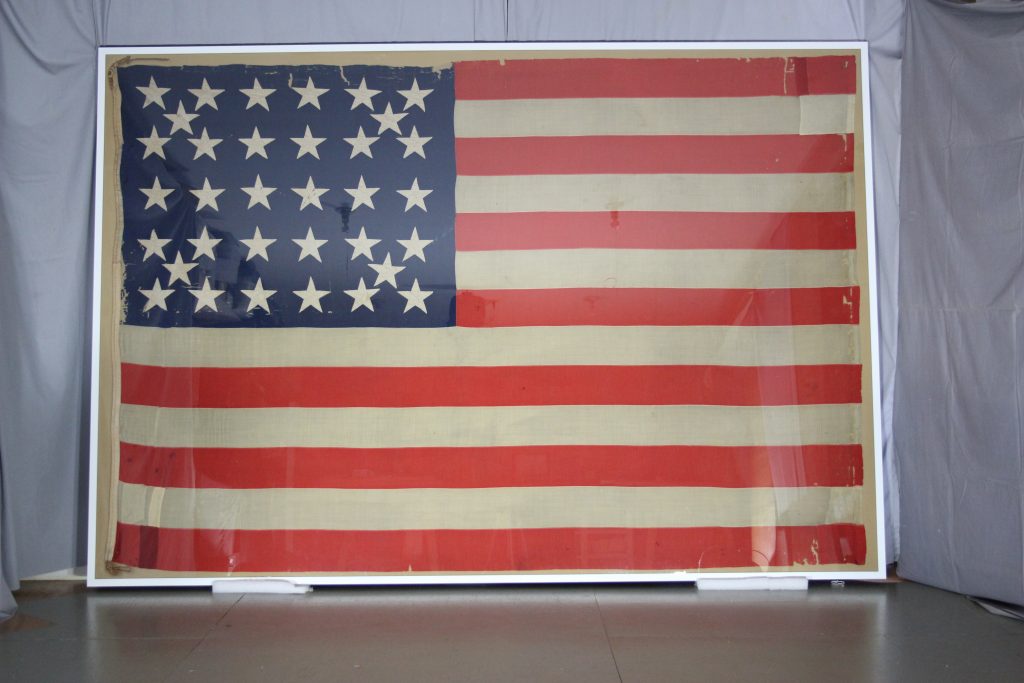
The next flag, The G.A.R. Flag, or also referred to as the “Mack Flag” is also composed of wool, but with cotton stars. The GAR flag features 38 stars arranged in concentric circles with a large central star. This particular flag was in poor condition with stains, numerous weak areas, and losses overall, including tears, holes and vertical slits. The canton in particular had losses to the cotton stars which were quite brittle.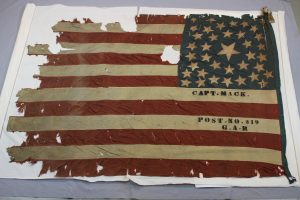
The flag was cleaned, stabilized and pressure mounted. The weak fly end of the flag in particular received careful attention as the losses were jagged, and could possibly cause additional loss to the surrounding threads.
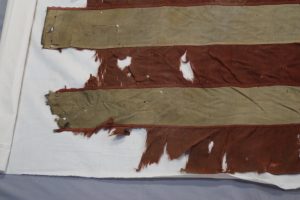
The flag was pressure mounted and prepared for display in a unique way; the canton appears in the upper proper left corner. It was determined that it would be displayed so that the words stenciled onto its surface could be easily read. It was prepared for shipment back to Wilson’s Creek National Battlefield, where it will be displayed.

The final flag treated was the very large (114″ long!) 34-star National flag composed of cotton and featuring a unique canton with red and white stars. Overall the flag was quite dirty with dark liquid tide-lines present. The previous owners were smokers and it was the many years of exposure to smoke that gave the flag a dark yellow haze over the surface. The image below shows how the flag arrived at the studio; the long fly-end was folded behind and the flag was sewn to a cotton backing.
The condition of the hidden stripes was unknown. Once released from its backing, the long fly edge could be examined. Surprisingly, even though they had been protected, the hidden stripes were not much brighter, (i.e. they had faded similarly to the stripes that had been exposed).
The flag (as photographed above) is displayed at its full length in a custom manufactured pressure mount and is exhibited at Wilson’s Creek National Battlefield.
Each of the Wilson’s Creek flags was professionally conserved by textile expert, Gwen Spicer, principal conservator and owner of Spicer Art Conservation, LLC.
The flags featured above are the property of the United States National Park Service, Wilson’s Creek National Battlefield, Republic, Missouri. No images contained herein may be reproduced without the permission of Wilson’s Creek National Battlefield or the National Park Service.

